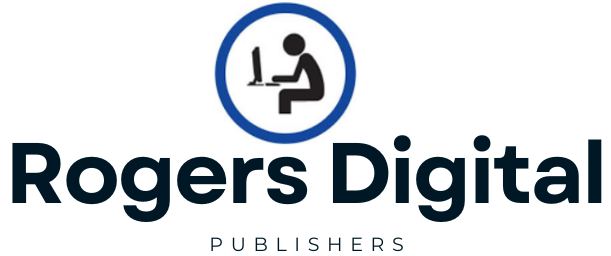Using Headless CMS to Maintain Brand Consistency in AI-Generated Pages

Yet, with AI-written articles getting the most page views due to new digital marketing efforts, the requirement for consistency and a well-oiled brand identity remains across every brand touchpoint. Yet even with the power of AI at one's fingertips for creating quick and efficient efforts, AI requires an architecture plan to ensure each brand-generated piece retains the same brand voice/design intent/strategic opportunity. Enter the need for a headless CMS. A headless CMS is more critical than ever to distinguish content from display and offer templated structures to enable an enterprise to let AI run rampant without losing brand integrity. In the end, this facilitates a CMS that supports both automation for speed and brand integrity.
Why Brand Consistency Is Critical When Experiences Are Rendered By AI
Every page, post, and popup is an experience in a digitized world. Every engagement rendered by AI will be situationally aware and contextual. However, as AI experiences become increasingly more straightforward, they can just as easily become derailed if not established against a consistent, branded framework. Consistency provides the parameters for AI to learn and grow; every nuance and interaction from a brand only serves to further an understanding of the potential brand values, mission, visual identity, and tone of voice even more so, regardless of who accesses it or where it's created and delivered. Case study: Scaling with Storyblok demonstrates how enterprises maintain this consistency while rapidly expanding digital experiences. Brand consistency creates trust, familiarity, reliability, and enhanced experience. Therefore, the larger the scale and speed with which AI experiences can and do happen, the more enterprises need to put elements in place that ensure brand manifestation remains consistent, even if the content is rendered to exponential extremes.
Headless CMS as the Brand Truth Commander
Where does this consistency come from? A headless CMS is a single source of truth as it contains a repository of every content block, component and design asset known to be on-brand. Unlike a traditional CMS which connects specified content with expected placement meaning, a piece of content can only exist in one specific location/a certain page a headless CMS dispenses modular and structured content natively through APIs to any channel/modal/UI. Therefore, whether AI creates a landing page or email campaign, it will always only render pieces from what's already live actual, approved, in-use content blocks including headers, buttons, images, pull quotes and style tokens and affix them to the brand via stringent guidelines that dictate what's appropriate Where. The headless CMS operates as the connective governance layer in which API-connected items exist as the FIRST layer of possibilities. Thus, it provides a centralized grounding source for which all AI-rendered endeavors can remain in-bounds of branding.
How To Ensure Brand Consistency Through Prescriptive Design Standards
Brand consistency isn't just about what the content says; it's about how it looks and responds. Thus, through structured UI elements within a headless CMS from design tokens to reusable UI components and layout systems prescriptive design standards ensure AI-generated pages are within-expectations, too. Therefore, beyond just language integrity, placement and appearance of Design Elements like rounded button shapes, font sizes for headers, padding, color options and grid setups all come from the same set of standards. The point behind this methodology is that even when AI pulls from a variety of sources or tries to create based on its own standards, it will only have access to the grid system set up for the brand; it will only have editing tools from a filter bank created and put into use. Thus, regardless of Who integrates the experience or Where it exists IRL or online, it will always feel like it belongs.
Controlling Voice and Messaging With Content Models
Voice and tone are two of the most nuanced yet empowering pieces of the branding puzzle. A headless CMS contributes to on-message consistency because teams can create and enforce content models that dictate all governance options for content structure from character counts and reading levels to metadata and SEO. When AI drafts copy, it receives this input so that subsequent tones, lengths, and placements emerge. For example, a content model for a product offering for a financial institution may include risk disclaimers, a formal, professional tone and inclusion of certain benefits. When the parameters for what's appropriate are set from the beginning, AI isn't just faster than a human it's that much more intelligent about remaining on-message.
Metadata as a Guide for Brand-Safe Automation
Metadata tags can help AI help brands adhere to standards. When content modules are tagged with attributes like audience segment, funnel position, campaign type or compliance category, AI possesses the acumen to make appropriate assembly decisions. A testimonial that tags “enterprise” and “formal” isn't going to get slapped onto a casual landing page for students; instead, AI will be able to assemble because that's what the metadata signals. This layer of intelligence enhances AI's capabilities as it no longer needs humans giving it direction; instead, it can respond to real-time signals to create content that stays compliant with brand standards.
Version Control and Approval Workflows for Safe Scaling
A headless CMS allows version control and approval workflows that protect brand integrity through the scaling process. As AI creates new alignments of text and graphics, they can automatically be sent through approval gates or to humans for approval before going live. Marketing, legal or brand teams can require that new iterations of brand standards are vetted for internal compliance. Allowing flexible workflows and integrations means brands can scale content at an unprecedented rate and still trust that any version whether arrived at via automation or human touch was vetted through a system designed to ensure compliance.
Instant Updates Without Compromising Brand Integrity
Brand guidelines evolve logos change, taglines shift, design systems adjust. A headless CMS allows brands to quickly transform every AI-produced output in-the-moment to accommodate these changes. Because content is modular and distributed via API, a simple adjustment to one element (i.e. footer, product title or legal disclaimer) can go live in seconds without damaging the overall page. This opportunity for fluid adjustments means that no matter how many pages are spun up and in what locations everyone gets the most up-to-date version of the brand. There's no versioning confusion and a cohesive branded experience is enhanced across the whole content universe.
Centralized Control for Decentralized Experiences
For global brands, the ability to internationalize their content while retaining brand integrity can be daunting. A headless CMS gives brands the best of both worlds with multi-language content, geo-targeted variations and localization requirements while still upholding a master design system and branded structure. AI can output geo-targeted landing pages by way of content modules designated for specific translations or markets; yet, it can still incorporate global style guides and messaging matrices. This allows local teams the accessibility and authority to develop relevant experiences while still ensuring brand integrity. The headless CMS is the catalyst for this to happen, empowering personalized output without stripping it of leadership.
Empowering AI with Parameters, Not Limitations
While automation should enhance compliance and efficiency, it should do so through parameters. A headless CMS provides AI the creative freedom it requires to operate, all while ensuring all output remain compliant and on-brand. These are not limitations, they are smart restrictions that permit AI to generate within safe, branded confines. When AI has access to appropriate outputs structured content, design systems, metadata and templates there's no guesswork regarding what "on-brand" is. It understands. This encourages a higher quality of intelligent automation where speed is not the foe of quality and consistency is guaranteed from the start not as an afterthought.
A Centralized Content Repository Keeps Cross-Departmental Teams on the Same Page
Maintaining brand consistency across AI-generated pages is just as much an operational concern as it is a technical one. A headless CMS is a centralized content repository from which designers, marketers, content creators, and developers can collaborate on the progressive rendering of structured assets. Each team works in its silo with domain expertise, but the output is similar due to the available models and templates in a centralized approval system. The less compartmentalized each team can operate, the more likely AI-generated pages will reflect the entirety of a branding effort and not piecemeal.
The Ability to Expand Campaigns Without Compromising Brand Representation
Enterprises that have made a name for themselves should be able to digitize and expand their campaigns without losing brand integrity. The ever-growing request for more personalized and micro-targeted content indicates that businesses should be able to provide it; a headless CMS champions this endeavor by allowing AI to produce an infinite number of pages from a consistent library of branded content blocks. Niche campaigns, seasonal opportunities, and pop-up sales should all have access to tackle specific marketplaces; however, with the ability within headless CMS to maintain font, size, and brand voice, enterprises can trust that macro loyalty and global expansion will occur without worry. Overnight successes can thrive without damaging trust accrued over years as long as the same centralized foundation fosters international efforts.
The Ability to Support Non-Traditional Pages in the Future
AI-generated pages will not only exist on web browsers. In the future, people will engage with the world and brands via an increasing number of nontraditional platforms think voice assistants, wearable technology, and AR experiences. Brands should consider how to remain consistent across all possible encounters. A headless CMS allows brands to leap into the future, breaking everything down into content and design units that render as data that can be utilized on any platform. An AI program can easily adjust to what's needed, but it shouldn't have to recreate how any brand should feel. With structured content, semantic metadata, and dynamic APIs, your brand will be acknowledged and work efficiently, no matter how it becomes digital in the future.
The Newest Way to Assess Brand Consistency with AI Driven Initiatives
Brand consistency comes not only from establishing rules but assessing adherence to them, as well. AI in a headless CMS can assess where content has been used across pages, for example, and flag any transgressions against brand rules. By assessing design patterns, tonal application, and metadata, AI can let brands know if their voice is being recreated correctly or at risk. This allows teams to adjust rules, retrain models, and ensure consistency across any and all AI endeavors for a scalable strategy for brand compliance that's also accessible.
Conclusion: Consistent Future-Ready Automation Creates Loyalty
Landing pages driven by AI can do so much from time efficiency to personalized efforts. But the drive to go fast can also cut corners when the proper foundational alignment is absent. Thankfully, through headless CMS guidance, your brand can have the trusted structural and strategic scaffolding to avoid disaster. It acts as a content hub, infuses branding design systems, maintains strategic messaging architectures, and ensures compliance from the ground up for every layer so that AI becomes an enhancement, not a threat. Your brand identity can remain intact, flexible, adaptable, and always instantly recognizable as yours. In an age of intelligent automation, consistency isn't confining, with a headless CMS, it's the competitive edge.

